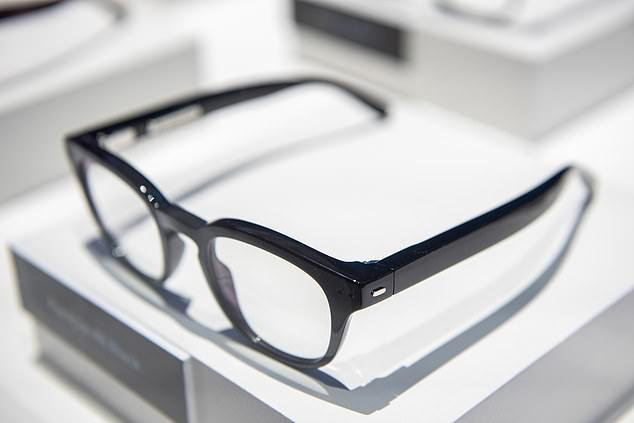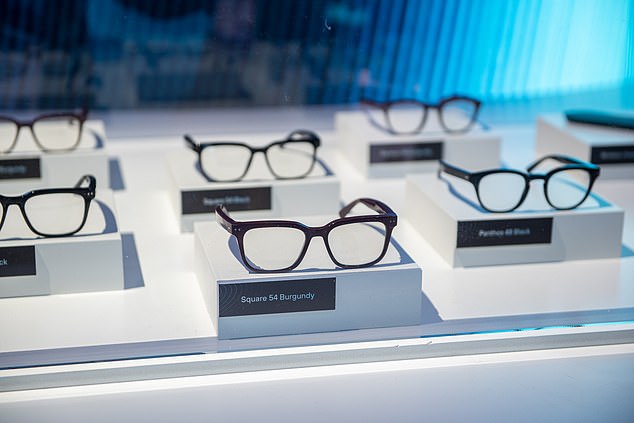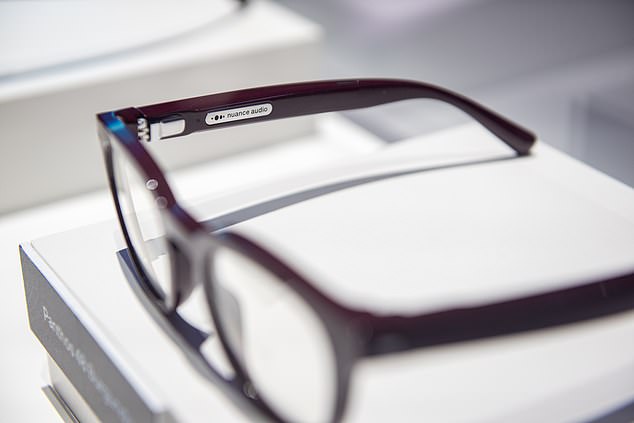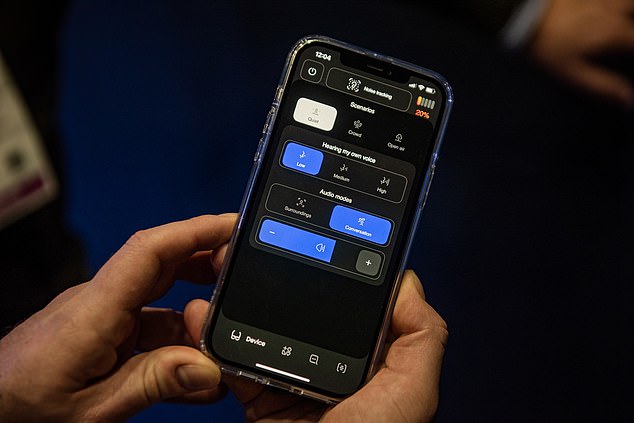Oakley maker announces glasses with built-in HEARING AID
- The glasses brand has developed an all-in-one device for hearing and seeing
- Recent legislation allows them to sell it without a prescription in the US
- READ MORE: Wearing hearing aids can reduce the risk of premature death by 24 percent
<!–
<!–
<!– <!–
<!–
<!–
<!–
Eyewear brand EssilorLuxottica will sell glasses with built-in hearing aids, the company announced this week at CES 2024 in Las Vegas.
Not content with visual aids, the glasses manufacturer is entering the hearing aid market with glasses that amplify sound coming from the direction the wearer is looking.
This publication follows research showing that older adults with hearing loss have a 24 percent lower risk of premature death when they wear hearing aids.
The new devices, called Nuance Audio, will be sold in the US from fall 2024, EssilorLuxottica representatives told DailyMail.com.
Then they will be in Europe around the first half of 2025.

Nuance Audio is the newest brand from EssilorLuxottica. It contains hearing aids in the glasses arms, which focus on the sound coming from the front
The company also owns eyewear brands including Oakley, Ray-Ban and Native Eyewear.
The glasses are aimed at mild to moderate hearing loss, and besides the slightly thicker arms, it’s not immediately obvious that they contain audio-assistive electronics.


The new glasses can be purchased without a prescription, thanks to new laws in the US that allow hearing aids to be sold without a prescription
More than 25 percent of Americans over the age of 50 have mild to moderate hearing loss. And about 15.5 percent of Americans over the age of 20 have some degree of hearing loss.


More than 25 percent of Americans age 50 and older have mild to moderate hearing loss, and about 15.5 percent of Americans over age 20 have some form of hearing loss
No price has been set yet, but a company representative said they will be “significantly cheaper” than conventional hearing aids.
Noise-canceling technology eliminates noise coming from behind the wearer, says Rafaello Infantino, director of integration and delivery at EssilorLuxottica.
Anyone who wears hearing aids—or has gone out to dinner with someone who wears them—knows that this type of noise is a common complaint about the devices.


The hearing aids of the glasses can be controlled via an accompanying app. This allows wearers to adjust how loudly the hearing aids amplify sound, including the person’s own voice
Instead of fitting in the ear like conventional hearing aids, Nuance Audios are completely open-ears.
They amplify the sound from a spot on the arm, close to the wearer’s ear.
However, only the user can hear it. This was one of the main technical challenges in developing the device.
But now that the glasses have been developed, EssilorLuxottica can sell them in their existing stores.
in 2022, the US Food and Drug Administration – which regulates medical devices – made it legal to sell hearing aids without a prescription.
So instead of having to go to an audiologist and get a prescription, people can just buy them like they would buy eyeglass frames – with or without prescription lenses.
The glasses charge wirelessly while sitting on an accompanying charging pad. A remote control or mobile app can be used to change the volume and other settings, including how loudly the wearer hears their own voice.
